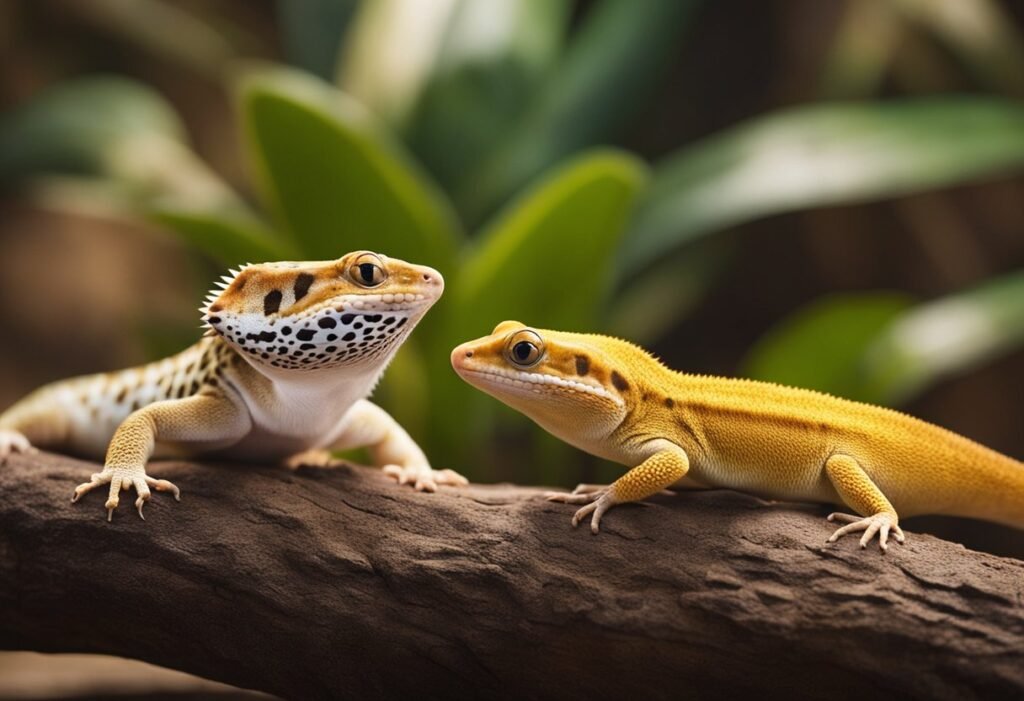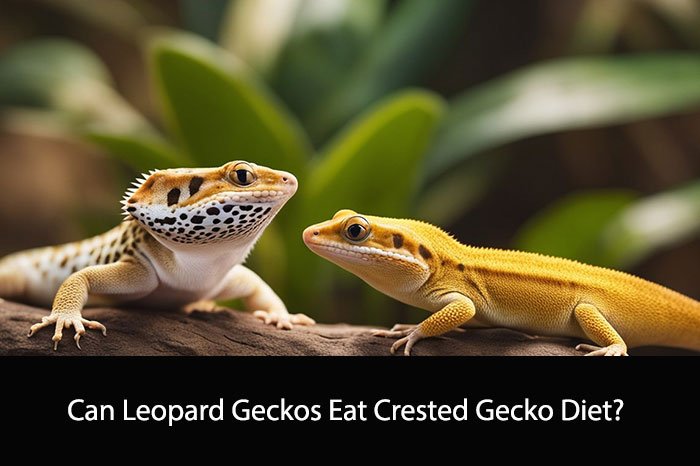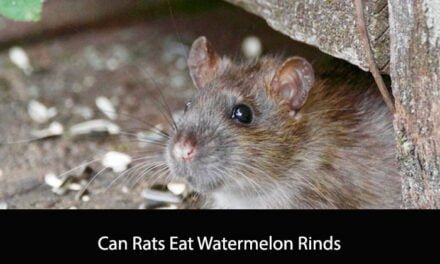Leopard geckos are one of the most popular reptile pets due to their docile nature, ease of care, and unique appearance. As with all pets, ensuring they receive a balanced diet is crucial to their health and wellbeing. While leopard geckos are primarily insectivores, some owners may wonder if they can also eat crested gecko diet as a supplement or alternative to their regular diet.
Crested gecko diet, also known as CGD, is a powdered mix of fruits, insects, and other ingredients that is formulated to provide a complete and balanced diet for crested geckos. It has gained popularity among reptile owners due to its convenience and nutritional value. However, whether or not leopard geckos can eat crested gecko diet is a topic of debate among reptile enthusiasts. In this article, we will explore the nutritional requirements of leopard geckos and examine whether or not crested gecko diet can be a suitable addition to their diet.
Nutritional Requirements of Leopard Geckos

As responsible pet owners, it is important to ensure that our leopard geckos receive a well-balanced and nutritious diet. Leopard geckos are insectivores, meaning they primarily feed on insects. In the wild, their diet consists of crickets, mealworms, and other small insects.
To ensure that our leopard geckos receive a balanced diet, we must provide them with a variety of insects. This will help ensure that they receive all the necessary nutrients they need to thrive. In addition to insects, we can also provide them with supplements to ensure they receive adequate vitamins and minerals.
It is important to note that leopard geckos have different nutritional requirements at different stages of their life. For example, juvenile leopard geckos require more protein than adult leopard geckos. Therefore, it is important to provide them with smaller insects such as pinhead crickets and small mealworms.
In addition to providing a variety of insects, it is also important to ensure that our leopard geckos have access to fresh water at all times. We can provide them with a shallow dish of water that is changed daily to ensure that it is clean and fresh.
Overall, providing a well-balanced and nutritious diet is essential for the health and well-being of our leopard geckos. By providing a variety of insects and supplements, we can ensure that they receive all the necessary nutrients they need to thrive.
Overview of Crested Gecko Diet
Crested geckos are omnivores, which means they eat both plant and animal matter. In the wild, they primarily feed on insects, fruit, and nectar. However, in captivity, it can be challenging to provide a varied diet that meets all their nutritional needs. This is where Crested Gecko Diet comes in handy.
Crested Gecko Diet is a commercial powdered food that is specifically formulated to meet the nutritional requirements of crested geckos. It is made from a blend of fruits, insects, and other high-quality ingredients. The powder is mixed with water to create a paste that can be fed to your gecko.
One of the benefits of Crested Gecko Diet is that it is convenient and easy to use. It provides a complete and balanced diet, so you don’t have to worry about supplementing your gecko’s diet with additional foods. Plus, it is less messy than feeding live insects, which can be a hassle to keep and maintain.
Another advantage of Crested Gecko Diet is that it comes in different flavors, so you can offer your gecko a variety of tastes. Some popular flavors include banana, mango, and watermelon. This can help keep your gecko interested in their food and prevent them from becoming bored with their diet.
It is important to note that Crested Gecko Diet should not be the only food that your gecko eats. While it provides a complete and balanced diet, it is still important to offer your gecko a variety of foods to ensure they are getting all the nutrients they need. You can supplement their diet with live insects, such as crickets and mealworms, as well as fresh fruits and vegetables.
Overall, Crested Gecko Diet is a convenient and nutritious option for feeding your crested gecko. It provides a complete and balanced diet that meets their nutritional needs and comes in a variety of flavors to keep them interested in their food.
Comparative Analysis of Diets

When it comes to feeding leopard geckos, there are many options available. One of the most popular choices is the crested gecko diet. While it is marketed towards crested geckos, many leopard gecko owners wonder if it is a suitable food option for their pets.
To answer this question, we conducted a comparative analysis of the crested gecko diet and other common leopard gecko diets. We compared the nutritional content, ingredients, and feeding recommendations of each diet.
The crested gecko diet is a powdered food that is mixed with water to create a paste. It typically contains a blend of fruits, insects, and other ingredients. In comparison to other leopard gecko diets, the crested gecko diet is relatively high in protein and fat, and low in fiber.
Other common leopard gecko diets, such as mealworms and crickets, are high in protein and fiber, but lower in fat. These diets also provide the opportunity for natural hunting and foraging behaviors.
While the crested gecko diet may be a suitable occasional food option for leopard geckos, it should not be the sole source of their diet. A balanced diet for leopard geckos should consist of a variety of insects, such as crickets, mealworms, and waxworms, as well as occasional fruits and vegetables.
In conclusion, while the crested gecko diet may be a suitable option for leopard geckos in moderation, it should not be relied upon as the sole source of their diet. A balanced diet consisting of a variety of insects and occasional fruits and vegetables is recommended for the health and well-being of leopard geckos.
Potential Risks of Feeding Crested Gecko Diet to Leopard Geckos
When considering feeding crested gecko diet to leopard geckos, it is important to be aware of the potential risks involved. While crested gecko diet may seem like a convenient option for feeding, it may not provide the necessary nutrition that leopard geckos require.
Nutritional Imbalances
Crested gecko diet is formulated specifically for crested geckos and may not provide the appropriate balance of nutrients for leopard geckos. Leopard geckos require a diet high in protein and fat, while crested geckos require a diet high in carbohydrates. Feeding crested gecko diet to leopard geckos may result in nutritional imbalances that can lead to health problems such as metabolic bone disease.
Digestive Issues
Leopard geckos have a different digestive system than crested geckos and may not be able to properly digest crested gecko diet. This can lead to digestive issues such as diarrhea and constipation. Additionally, crested gecko diet may contain ingredients that are not easily digestible for leopard geckos, such as fruits and vegetables.
Allergic Reactions
Leopard geckos may have allergic reactions to some of the ingredients in crested gecko diet. This can result in symptoms such as itching, swelling, and difficulty breathing. It is important to monitor your leopard gecko closely when introducing new foods to their diet and to discontinue use if any adverse reactions occur.
In summary, while crested gecko diet may seem like a convenient option for feeding leopard geckos, it is important to consider the potential risks involved. Nutritional imbalances, digestive issues, and allergic reactions are all possible outcomes of feeding crested gecko diet to leopard geckos. It is recommended to stick to a diet specifically formulated for leopard geckos to ensure their health and well-being.
Safe Dietary Alternatives for Leopard Geckos

Leopard geckos are insectivores, which means they require a diet high in protein and low in fat. While their primary diet consists of insects, it is important to provide them with a variety of food options to ensure they are getting all the necessary nutrients. In this section, we will discuss safe dietary alternatives for leopard geckos.
Insects and Prey Options
Leopard geckos require a variety of insects in their diet. Some of the commonly fed insects include crickets, mealworms, and dubia roaches. It is important to gut load these insects before feeding them to your leopard gecko to ensure they are getting all the necessary nutrients. Additionally, you can dust the insects with calcium and vitamin supplements to provide them with extra nutrition.
Another prey option for leopard geckos is pinky mice. However, it is important to note that this should only be given as an occasional treat and not as a regular part of their diet. Pinky mice are high in fat and can cause health issues if fed too frequently.
Supplements and Vitamins
In addition to a varied diet of insects and prey, leopard geckos require supplements and vitamins to ensure they are getting all the necessary nutrients. Calcium and vitamin D3 are particularly important for their bone health. These supplements can be dusted onto their food or provided in a dish in their enclosure.
It is important to note that while crested gecko diet may seem like a convenient option, it should not be used as a replacement for a varied diet of insects and prey. Crested gecko diet is not nutritionally complete for leopard geckos and can lead to health issues if fed as a primary diet.
In summary, providing a varied diet of insects and prey along with supplements and vitamins is crucial for the health of leopard geckos. Avoid relying on crested gecko diet as a primary food source and always ensure that their food is gut loaded and dusted with supplements.
Feeding Guidelines for Leopard Geckos
As responsible pet owners, we want to make sure that our leopard geckos are getting the proper nutrition they need to stay healthy. While leopard geckos are primarily insectivores, some owners may wonder if they can supplement their diet with crested gecko diet. Here are some feeding guidelines to consider when feeding your leopard gecko.
Frequency and Portion Size
Leopard geckos should be fed every day or every other day, depending on their age and size. Juvenile leopard geckos should be fed more frequently than adults, as they require more food to support their growth. A good rule of thumb is to feed your leopard gecko an amount of food that is roughly the size of their head.
When it comes to portion size, it’s important not to overfeed your leopard gecko. Overfeeding can lead to obesity, which can cause health problems down the line. If you notice that your leopard gecko is becoming overweight, reduce the amount of food you are feeding them.
Food Preparation and Safety
When feeding your leopard gecko, it’s important to prepare their food properly to ensure their safety. Insects should be gut-loaded before feeding to provide additional nutrition for your leopard gecko. You can also dust the insects with a calcium supplement to ensure that your leopard gecko is getting enough calcium in their diet.
If you are considering supplementing your leopard gecko’s diet with crested gecko diet, it’s important to do so in moderation. While crested gecko diet can provide some additional nutrition, it should not be the primary source of food for your leopard gecko. Additionally, make sure to read the instructions carefully and follow the recommended serving size.
In conclusion, feeding your leopard gecko a balanced diet is crucial to their health and well-being. By following these feeding guidelines, you can ensure that your leopard gecko is getting the proper nutrition they need to thrive.
Identifying Quality Commercial Diets for Leopard Geckos
When it comes to feeding leopard geckos, it’s important to provide them with a balanced and nutritious diet. While there are many commercial diets available, not all of them are created equal. Here are some tips for identifying quality commercial diets for leopard geckos:
- Look for a diet that is specifically formulated for leopard geckos. While some diets may be marketed as suitable for multiple reptile species, it’s important to choose a diet that is tailored to the specific nutritional needs of leopard geckos.
- Check the ingredient list. A quality diet should contain a variety of protein sources, such as insects and/or meat, as well as fruits and vegetables. Avoid diets that contain excessive amounts of fillers or artificial preservatives.
- Consider the nutritional content. A good diet should provide a balance of protein, fat, and carbohydrates, as well as essential vitamins and minerals. Look for diets that have been formulated with the help of veterinarians or nutritionists.
- Read reviews and do your research. Look for feedback from other leopard gecko owners who have used the diet, and consult with a reptile veterinarian if you have any questions or concerns.
By choosing a high-quality commercial diet, you can help ensure that your leopard gecko is getting the nutrients they need to thrive. Remember, however, that commercial diets should be supplemented with fresh insects and occasional treats to provide a varied and stimulating diet for your pet.
Frequently Asked Questions

What alternative diets are safe for leopard geckos if not crested gecko diet?
If you’re looking for alternative diets for your leopard gecko, you can try feeding them with mealworms, crickets, waxworms, and superworms. These insects are high in protein and are safe for your leopard gecko to consume.
Are there any fruits that leopard geckos can safely consume?
Leopard geckos are not known to eat fruits in the wild, but they can consume small amounts of fruits such as bananas, apples, and berries. However, fruits should not be a significant part of their diet as they are high in sugar.
Is it appropriate to feed leopard geckos with earthworms?
Yes, earthworms are a great source of protein for leopard geckos. However, make sure that the earthworms are not too big for your leopard gecko to consume and that they are not wild-caught.
What are the consequences of feeding leopard geckos with dead insects?
It is not recommended to feed your leopard gecko with dead insects as they may contain harmful bacteria and parasites. Always provide live insects to ensure that your leopard gecko is getting the nutrients they need.
Can leopard geckos derive nutritional value from vegetables such as lettuce or broccoli?
Leopard geckos are primarily insectivores and do not require vegetables in their diet. However, you can offer small amounts of leafy greens such as kale and collard greens as a treat. Avoid feeding your leopard gecko with vegetables such as lettuce and broccoli as they are low in nutritional value and may cause digestive issues.
Which foods are considered harmful or toxic to leopard geckos?
Foods that are considered harmful or toxic to leopard geckos include avocado, rhubarb, citrus fruits, and onions. These foods can cause digestive issues and may be toxic to your leopard gecko.





